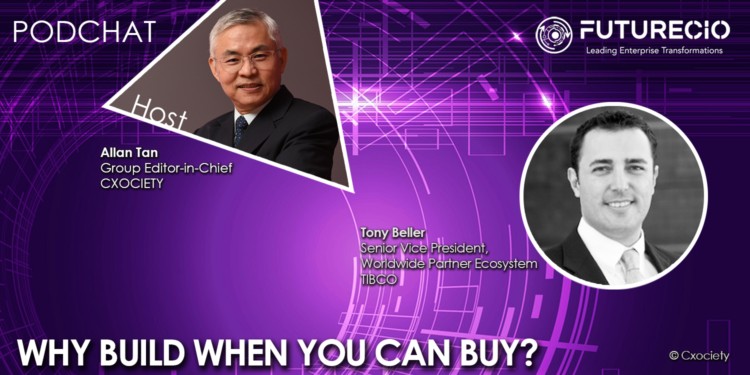For decades, companies that can afford to maintain their own data centres also have software developers tasked with building and maintaining these applications.
But in recent years with the rise in popularity of open-source software, the proliferation of options, and the need for faster turnaround time of products, companies have started to look for alternative options, including building applications using third-party software tools or platforms.
FutureCIO spoke to Tony Beller, senior vice president, Worldwide Partner Ecosystem, TIBCO, to discuss the evolving embedded software landscape.
Why build software
Beller says people build software when they feel like they have enough capacity and resources (skill sets) internally to sustain and maintain that software.
Challenges to building your own software
He says organisations that decide to build their own will have ownership of the entire lifecycle of the software including maintenance, upgrades, building new features and performing patches. This means owning your own development team, including keeping their skills updated, for the life of the software.
When is it time to consider a buying option as opposed to building one?
Beller cites two common reasons for when an organisation decides it wants to cross-over to buying as opposed to building. One is if they want velocity in the business.
“Nowadays, companies need to speed up the business. They want speed, they probably want to buy from someone else that already has the software and the capabilities to do so.”
Who owns the rights to software when parts are outsourced?
According to Beller, the intellectual property (IP) rights for software purchased from third-party is owned by the developer.
“The IP of the person that is selling the software – let’s say, in this case, TIBCO – we own the IP in terms of the technology that is underneath that software. Anything that is built on top, the buyer owns that IP.”
He acknowledges a delineation of where the IP is owned. “For example, you said you build your own website. The software that you used to build your website, the company owns that software/ IP; but anything that you put on top of that software, that’s your own IP,” he explained.
Considerations when choosing to buy software
Beller suggests three areas to bear in mind: longevity of software, support and maintenance.
“First, if they plan to build that software, build their IP, and then sell to someone else, they need to look at the longevity of that software or business of the OEM.
“Second, support. What is the support that you’re going to receive from the vendor on that software that you are buying. This is critical, especially for large enterprises.
“Last is maintenance. Upgrades and the ongoing innovation that goes into that software that’s been bought are critical. At the pace that technology is going, innovation is critical. You want to make sure that whatever software you are buying to power your technology, there is constant innovating and you are incorporating (these new developments) into your product.”
Significance of no-code and low-code in software development
Beller said it depends on what the company is trying to do and what it is willing to maintain.
“No-code gives you the ability to go fast because there is no coding. You need fewer skills to build on top of that software. However, you also rely on the no-code vendor for more support and to make sure that they are on top of things.
“If it is low-code, you have to build the skill sets in-house, especially if it is not something that is market-ready. You have to build more skills in-house."
Asked where the direction is head, he remains uncertain as to the general direction of the low-code versus no-code. He opines that it all depends on what you are trying to do.
TIBCO’s OEM value proposition
According to Beller, TIBCO’s value proposition is that it has proven technology in the marketplace.
“It started from our integration products that has been around more than 20 years and its proven. It is enterprise-ready! Even newer products, for example, predictive analytics, they are enterprise-ready products that can scale.
“We are open about our OEM strategy in terms of how we price, how we go commercially, how we support our OEMs, and we have this proven technology.”
Does it matter if a company buys from a cloud-native provider or not?
Beller said it is a matter of preference. In the case of TIBCO, he affirmed the company has both on-prem and cloud-native software.
Deciding a ‘buy or build’ strategy
Taking from his own experience, Beller commented that typically it is either the CIO, CTO or the Chief Product Officer. But there is also the possibility a CEO can get involved depending on the size of the company.
Hurdles that companies must consider with an OEM
Beller advices to pay attention to potential license fees and royalties.
“Secondly, you are tied to someone else’s technology, someone else’s innovation, and you have to live with that.”
He cautioned that the OEM buying cycle tends to be long because you’ve got to prove to the buyer that you are sustainable, have the right commercial terms, able to provide support, and you are bringing the right innovation to the table.
What to ask OEM vendor
“Ask about support, training and enablement and innovation,” concluded Beller.
Click on the podchat player above to listen to Beller’s comments and responses to the questions below:





